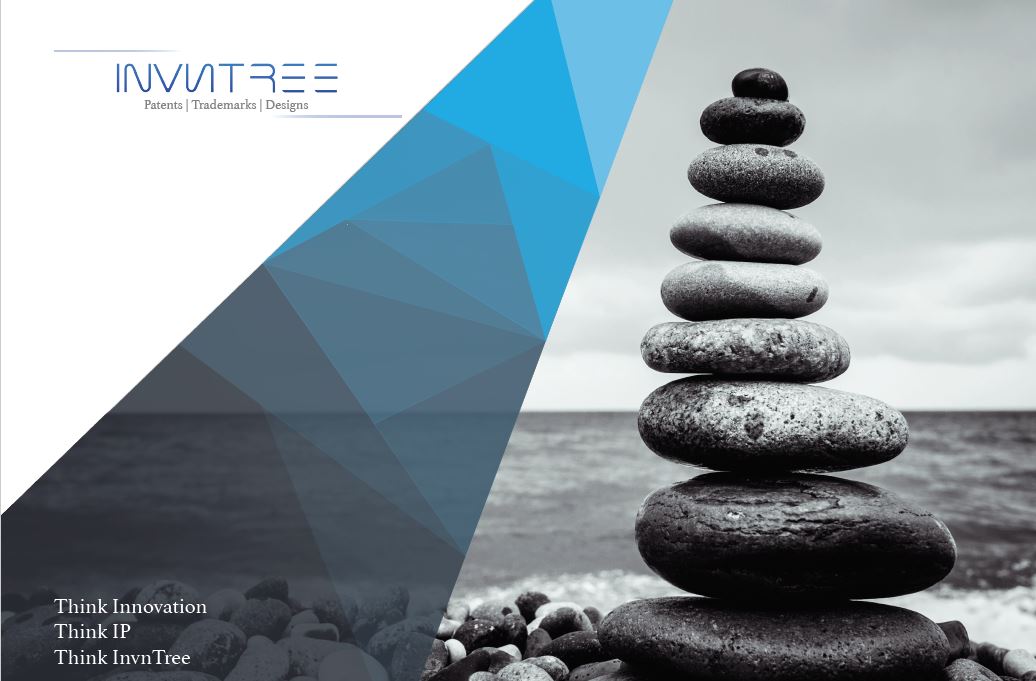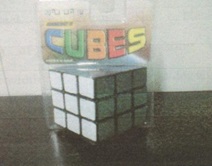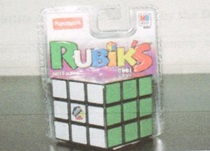Tag Archives: infringement
Philips moves Delhi High Court against Xiaomi and Vivo over patent infringement

Philips has moved the Delhi High Court over patent infringement against two Tech giants, Xiaomi and Vivo. Philips in its suits claims that the two mobile manufactures have violated its "Standard Essential Patents". The patents relate to “UMTS enhancement (HSPA, HSPA+) and LTE technologies” in the telecommunication technologies.
In one of its suits against Xiaomi, the Plaintiff have sought the following:
- Restraint against manufacturing/assembling, importing, selling and advertising of certain smartphones that infringe the Plaintiff’s patents.
- Injunction has been sought to direct the Central Board of Excise and Customs to issue appropriate instructions to custom authorities to restrict the import of mobile handsets that infringe the Plaintiff’s patents.
- Quantum of mobile phones and any other devices sold till date that are UMTS, HSPA, HSPA+ or LTE compliant.
- Revenue earned from the sale of such devices for every quarter.
- Safeguarding the Plaintiff's rights and interest and secure recovery of amounts for past infringing activities of the Defendant.
A single bench of Justice V. Kameswar Rao directed the defendant to maintain an amount of Rs 1000 crores in their bank account operated in India and submit details of the bank accounts operated in India.
The advocate representing the defendants accepted the notice for the defendants and has taken on record that, till the next date of hearing the Defendants shall maintain an amount of Rs 1000 crores in their bank account operated in India. The defendants have also agreed to file the details of the bank accounts operated in India where the said amount is being maintained before December 02, 2020.
Summons are issued to the defendants, and the same are received by the advocate for the defendants. The summons states that a written statement be filed within 30 days from the date of summons.
The hearing of suit against Xiaomi will be on March 01, 2021.
In its suit against Vivo, the Plaintiff has pleas that a direction be issued to not create any encumbrance or third-party rights in its manufacturing plant.
While dealing with the suit against Vivo, a Single Judge Bench of Justice Rajiv Shakdher directed the defendant to not create any encumbrance in its manufacturing plant during the adjudication of the case.
The hearing of suit against Vivo will be on February 10, 2021.
High court order against Vivo: https://images.assettype.com/barandbench/2020-12/7c132206-219b-43ae-a047-82e43136ff40/Philips_v__Vivo___383___Order_dt__17_11_2020.pdf
High court order against Xiaomi:
http://delhihighcourt.nic.in/dhcqrydisp_o.asp?pn=220558&yr=2020
We hope this article was a useful read.
Please feel free check our services page to find out if we can cater to your requirements. You can also contact us to explore the option of working together.
Best regards – Team InvnTree
This work is licensed under a Creative Commons Attribution-Non Commercial 3.0 Unported License
Nuances of Copyright infringement by manufacture of products based on Engineering drawings

A recent judgement of the Delhi High Court in Holland L.P. and another. vs S.P. Industries calls for a debate on copyright infringement, and overlap and exclusivity between copyright and industrial design protection laws in the country.
We start by providing an overview of events that led to the dispute between the parties. Holland L.P. had designed and developed an Automatic Twist Lock (“ATL”) system, and has supplied the same to the Indian Railways over the years, with an Indian partner. Indian Railways had floated a tender in the year 2012 for replacement and repair of a list of parts of the ATL devices supplied by Holland L.P. and its partner. The Indian partner of Holland L.P. and S.P. Industries participated, with the latter emerging as the successful bidder.
In this backdrop, Holland L.P. (“Plaintiff 1”) and its partner (“Plaintiff 2”) had sought permanent injunction restraining S.P. Industries (“Defendant”) from manufacturing, selling, offering for sale, advertising, directly or indirectly ATL and parts thereto, alleging that such acts of the Defendant amounts to infringement of copyright of the Plaintiff. The Court however, ruled in favour of the Defendant.
Now referring to the particulars, engineering drawings (2D drawings) of the ATL prepared by Plaintiff 1 was made available as part of the tender by Indian Railways with permission from Plaintiff 2. The Plaintiffs contended that they are the owners of the copyright over the engineering drawings and they have the exclusive right over three-dimensional representation of the engineering drawings. In other words, the Plaintiffs contended that they have the right to prevent others from manufacturing, selling, offering for sale or advertising a product based on the engineering drawings. The Plaintiffs further contended that engineering drawings are not “Design” as per The Designs Act, 2000, since such drawings are “functional” and do not “appeal to the eye alone”. The instant contention is particularly relevant because, in case the subject matter over which the Plaintiffs are claiming copyright protection, is protectable under The Designs Act, then copyright would cease after the Plaintiffs reproduce the ATL 50 times by an industrial process, as per Section 15 of the Indian Copyright Act. The Plaintiffs had in fact reproduced the ATL systems 50 times by an industrial process.
On the other hand, the Defendant contended that the subject matter over which the Plaintiffs are claiming copyright, is protectable under The Designs Act, and since the Plaintiffs have reproduced ATL systems at least 50 times, the copyright of the Plaintiffs has ceased.
While there were various other contentions, we are particularly interested in understanding whether engineering drawings is subject matter of copyright protection alone, or are they protectable as industrial design under The Designs Act.
The Court is of the opinion that engineering drawings made for the purposes of production of ATL systems is subject matter, which is protectable as industrial design under The Designs Act. The Court is of the opinion that, any design (such as engineering/machine drawings) which is used for the purpose of industrial production of an article, is protectable as industrial design. The Court draws the instant opinion by conjoint reading of Section 2(d) of Designs Act, 2000, Section 14(c) and 15(2) of the Copyright Act, 1957.
We agree with the Court’s interpretation only in part for reasons that follows. One would agree that a set of engineering drawings would include drawings that define the way a product looks. In other words, such subset of drawings defines how the finished article/product appeal to and are judged solely by the eye. Hence, such drawings may be subject matter of industrial design protection. However, engineering drawings may also include a subset of drawings that define how certain parts, which are housed inside the product, are configured. Hence such drawings correspond to parts that are purely functional and are incapable of appealing to and being judged solely by the eye. Hence, it may be inappropriate to come to a conclusion, as the Court has, that any design which is used for the purpose of industrial production of an article, is protectable as industrial design. Our sense is that, design of product will include subject matter, such as engineering drawings of “housed/functional” parts (purely functional and not expressly contributing to aesthetics), over which only copyright protection applies, and will also include subject matter, which substantially defines how the product is perceived by the eye, which is protectable as industrial design.
Having made the above observation, it is now worthwhile to explore whether the owner of copyright over technical drawings corresponding to such functional parts (not the product as a whole, which is subject matter of industrial design protection) stop others from manufacturing such functional parts. Section 52(1) of the Copyright Act precisely deals with this matter.
Section 52(1): The following acts shall not constitute an infringement of copyright, namely:-
(w) the making of a three-dimensional object from a two-dimensional artistic work, such as a technical drawing, for the purposes of industrial application of any purely functional part of a useful device.
The above section makes it clear that, even though one may hold copyright over engineering drawings over purely functional parts, they will not be able to stop third party from producing such parts. In other words, provisions of the Copyright Act cannot be used to stop third party from producing (including other acts of commerce) such functional parts, irrespective of whether they are visible or hidden from being gauged by the eye.
In conclusion, drawings that define the way an article/product appeals to and is judged solely by the eye, is protectable as industrial design, and copyright in the same ceases to exist once the article/product is reproduced 50 time by an industrial process by the owner. Drawings of purely functional parts of an article/product are not protectable as industrial design, and only copyright protection exists. However, such copyright is not infringed by third party who produces such functional parts.
I hope you found our article informative. The judgment can be downloaded below.
Please feel free check our services page to find out if we can cater to your requirements. You can also contact us to explore the option of working together.
Best regards – Team InvnTree
This work is licensed under a Creative Commons Attribution-NonCommercial 3.0 Unported License
Infringement of IP associated with the Rubik’s Cube
Seven Towns, which owns IP associated with Rubik’s Cube had filed a suit alleging infringement of their IP by Kiddiland. The Rubik’s cube was invented in 1974 by Erno Rubik and its 1975 patent has since expired. However, Seven Towns Ltd. (Plaintiff 1) owns the trademark of “Rubik” and “Rubik’s Cube”, trade dress of Rubik’s cube and the copyright in artwork of label on the packaging of Rubik’s cube. In India, Seven Towns Ltd. imports and distributes Rubik’s Cube through Funskool (India) Ltd. (Plaintiff 2), its authorized licensee.
In the case of Seven Towns v. Kiddiland, available here, at the time of filing the suit, Seven Towns Ltd. did not have any registrations for the three-dimensional Rubik’s Cube in India. Hence, Seven Towns Ltd. filed a case against Kiddiland and Cybershop Marketing Pvt. Ltd. related to passing-off of the trade dress of Rubik’s cube and copyright infringement related to its packaging. In this regard, Seven Towns Ltd. also provided a list of worldwide registrations and countries wherein the trade dress of Rubik’s cube had been accepted as a three-dimensional trademark.
According to the Plaintiffs, the distinctive features of the Rubik’s cube trade dress were as follows:
- A black border/cage consisting of lines of a particular width along with each of the six faces of the cube covered with nine square stickers with rounded edges, the stickers consist of particular shades of six solid colours namely red, blue, orange, green, white and yellow.
- The specific size and shape of the Rubik's Cube.
The Plaintiffs felt that the overall impression of the Rubik’s cube may be considered as an artistic work falling under on Section 2(c) of the Copyright Act, 1957. Further, they asserted that they are deemed to be entitled to protection in India by virtue of the International Copyright Order, 1999.
The Defendants argued that the Plaintiffs cannot claim exclusive rights over the basic colours or the black colour forming the border/cage. However, the court was of the opinion that the Plaintiffs were seeking protection over a combination of all the features and colours that constitute the appearance of the Rubik’s cube, namely, a combination of shape, size, colours, and black borders of the squares in the Rubik’s cube.
The court was provided with scanned copies of the two parties as shown below.
Plaintiff’s Rubik Cube:
Defendant’s Rancho Cube:  The Plaintiffs’ pointed out that the appearance, packaging and labelling of the two products are similar in nature, and that there are more similarities than dissimilarities. The court agreed and was of the opinion that the Plaintiffs’ presented a strong case to establish passing-off. Hence, they upheld the claim of infringement as presented. Further, the court mentioned that if the Defendant attaches his own label to the trade dress of the prior user (the Plaintiffs’ Rubik’s cube), such a label would result in deception and also leads to a diluting of the Plaintiffs’ goodwill in the trade dress.
The Plaintiffs’ pointed out that the appearance, packaging and labelling of the two products are similar in nature, and that there are more similarities than dissimilarities. The court agreed and was of the opinion that the Plaintiffs’ presented a strong case to establish passing-off. Hence, they upheld the claim of infringement as presented. Further, the court mentioned that if the Defendant attaches his own label to the trade dress of the prior user (the Plaintiffs’ Rubik’s cube), such a label would result in deception and also leads to a diluting of the Plaintiffs’ goodwill in the trade dress.
We hope this article was a useful read.
Please feel free check our services page to find out if we can cater to your requirements. You can also contact us to explore the option of working together.
Best regards – Team InvnTree
This work is licensed under a Creative Commons Attribution-NonCommercial 3.0 Unported License
Infringement of patent claims – Indian Context
Claims of a patent define the scope of protection conferred by the patent. Hence, patent claims are worded carefully with an objective to make it harder for those attempting to work around the claims. While patent holders dread a situation where competitors make minor changes to a patent protected product/process to evade patent infringement, competitors on the other hand dread a situation where changes made to a patented product/process are not sufficient to evade patent infringement. Insight into how patent infringement is determined can go a long way in addressing concerns of patent holders and those attempting to work around existing patents.
Patent infringement analysis is usually conducted in two stages, namely, literal infringement analysis and non literal infringement analysis (infringement under the doctrine of equivalents). In the first stage of analysis, a claim and the alleged infringing product or process are analyzed to determine whether all the elements of the claim are present in the alleged product/process when the scope of the claim is construed by the literal language of the claim. If the alleged product/process includes all the elements of the claim when the scope of the claim is construed by the literal language of the claim, the claim is said to be literally infringed by the alleged product/process.
Patent infringement analysis proceeds to the second stage if literal infringement is not established. In the second stage, the scope of protection conferred by the claim is extended beyond the literal language of the claim. Several countries including US, UK and India apply various principles which extend the scope of protection conferred by a patent claim beyond the literal language of the claim while analyzing non literal infringement. Courts in the US have dealt extensively with situations relating to non literal infringement. The courts in India on the other hand have had relatively fewer occasions to deal with situations relating to non literal infringement.
On occasions the Indian courts have had to deal with situations relating to non literal infringement, the courts have favored purposive construction of claims, thereby extending the scope of claims beyond the literal language of the claims. The Delhi High Court in Raj Parkash Vs. Mangat Ram Chowdhry held:
“It is the pith and marrow of the invention claimed that has to be looked into and not get bogged down or involved in the detailed specifications and claims made by the parties who claim to be patentee or alleged violators.”
Purposive construction of claims was also suggested by the Madras High Court in TVS Motor Company Limited Vs. Bajaj Auto Limited. The court in the instant case held:
“In construing an allegation of infringement, what is to be seen is whether the alleged infringement has taken the substance of the invention ignoring the fact as to omission of certain parts or addition of certain parts.”
The above cited judgments suggest that the “pith and marrow” or the “substance” of the invention has to be looked into in defining the scope of a claimed invention. The Madras High Court also refers to House of Lords decision in Catnic Components Limited Vs. Hill and Smith Limited, which favors purposive construction of claims.
In light of the foregoing discussion, it is evident that the Indian courts do not limit the scope of protection conferred by a claim to the literal language of the claim. The instant position of the courts is in favor of patent holders who can be optimistic about enforcing their patent rights against those attempting to work around their patents by making modifications, which may be within the “substance” of the claim. Nonetheless, claims should be carefully crafted to capture the “substance” or “crux” of the invention, and should avoid including non-essential elements in the claim. On the other hand, those attempting to work around a patent claim should not rely on minor modification to a claimed product/process, which may be inferred to be not going beyond the “substance” of the target claim.
I hope you find this article helpful. You may also download our article for your reference.
Feel free to check our patent services page to find out if we cater to your needs.
Also, feel free to contact us or ask us a question and have it answered within 24 hours. This work is licensed under a Creative Commons Attribution-NonCommercial 3.0 Unported License
Does a patent give me the right to use my invention?
It is often conceived that a patent gives the right to the patent owner to use his invention. This conception is extrapolated to mean that, if a patent owner sells a product that is based on the invention that is protected by his own patent, then he will not be liable to infringement on others’ patents. This understanding, rather misunderstanding, sometimes becomes the basis for filing a patent application.
Person “X” applies for a patent on a product that has the modules A, B, C and D.
The patent office examines the patent application and identifies 3 existing patents; the first one covering module “A”, the second one covering module “B” and the third one covering module “C”. In spite of these existing patents, the patent office is convinced that a product comprising modules A, B, C and D has inventive step, which makes it non-obvious to a person with ordinary skill in the related technology, and hence grants a patent.

 Follow
Follow


